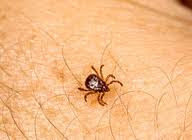
Encephalitis
Definition:
Encephalitis (en-sef-uh-LI-tis) is inflammation of the brain. Viral infections are the most common cause of the condition.
Encephalitis can cause flu-like symptoms, such as a fever or severe
headache, as well as confused thinking, seizures, or problems with
senses or movement. Many cases of encephalitis may go unnoticed because
they result in only mild flu-like symptoms or even no symptoms. Severe
cases of encephalitis,...













.jpg)
.jpg)







.jpg)